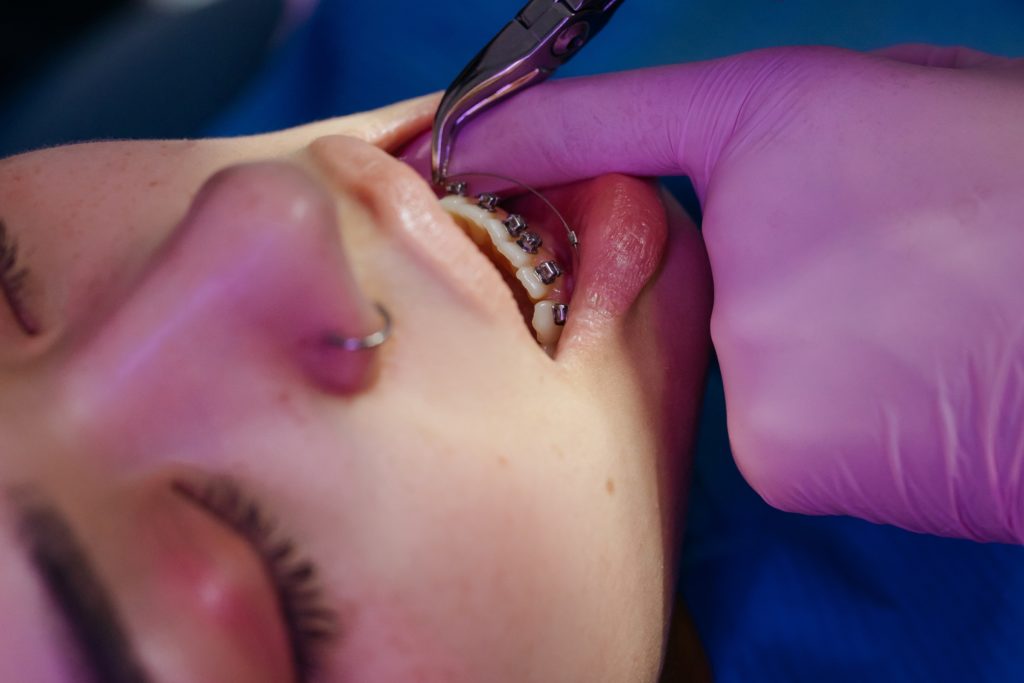Are your crooked teeth starting to affect your self-confidence? Understandably, your crooked smile could be the cause of your low self-esteem. Do you want to straighten your teeth into the smile you deserve? It's possible with aligners and retainers.
Should I use a retainer for teeth straightening? That's a common question asked by people looking to fix their smiles. This post unpacks everything you need to know about using aligners and retainers to straighten your teeth.
What are Retainers? Can I Use them to Straighten My Teeth?
Retainers are plastic devices designed by your orthodontist. The retainer matches the shape of your teeth, ensuring they stay in place. If you want to straighten your teeth, you need an aligner system.
Aligner systems are a series of clear, plastic aligners designed to pull your teeth into a new position. Depending on the system you go for, you could receive anywhere from seven to 26-sets of aligners in your treatment.
You wear each of the aligners for 22-hours a day, fixing your teeth in anywhere for four to 18-months. After you finish with your treatment and your teeth are straight, you'll use a retainer. The retainer prevents your teeth from shifting back to the old position.
What are Aligner Systems for Teeth Straightening?
Managed Orthodontics
If you decide to go with a managed orthodontic system, you only have the option of Invisalign to correct your smile. Your orthodontist exclusively works with Invisalign for your treatment. The ADA and FDA recognize Invisalign as the only suitable aligner treatment for use in orthodontic practices.
DIY Orthodontics
DIY aligners come from teledentistry companies that let you manage the process. While these aligner brands don't have any recognition with the ADA or FDA, they provide the same results as Invisalign. However, you never have to set foot in a dentist's office to use the system. All interactions between you and the company occur through a remote teledentistry platform.
At-Home Aligner Treatments Vs Invisalign
With Invisalign, you get a fully managed orthodontic experience. If you're a person that needs a doctor watching over you to calm your nerves, it's the best choice. With Invisalign, your orthodontist monitors every aspect of your treatment.
At-home aligners provide the same results as Invisalign, but you don't get the same follow-up support as you do at an orthodontic practice. However, according to user reviews, at-home systems work every bit as well as Invisalign.
How Much Does an Aligner System Cost?
If you're looking at an aligner system to straighten your teeth, you have the option of going with an orthodontic solution like Invisalign or an at-home aligner brand. At-home brands offer you some significant savings over traditional aligners.
Invisalign
Invisalign requires assessment, installation, and maintenance of your aligner system in your orthodontist's office. As a result, you'll end up paying a lot of money in consultation fees. The average cost of an Invisalign treatment varies between $3,500 to $8,000, depending on the system you select.
You'll visit your doctor for checkups every two weeks to 60-days during your treatment period. The average time to straighten your smile with Invisalign is anywhere from 4-months to 18-months. It depends on the extent of your dental problem.
If you're fine with playing twice the cost of Byte for your aligner treatment, Invisalign is the best choice. With Invisalign, you get fitment and checkups in the orthodontist's chair.
Your doctor monitors the process, telling you when it's time to move onto the next aligner.
However, Byte offers you the same experience, except it's through your smart device or laptop, instead of in your doctor's office.
At-Home Aligner Brands
In contrast to Invisalign, at-home aligners offer you an affordable treatment. At-home aligner brands offer you consultation through a remote teledentistry platform. You'll follow a custom treatment plan, with dentists or orthodontists following up with you every 30 to 90-days.
At-home aligners vary in the support they provide customers. Systems like Candid offer you as close to an orthodontic experience as you can get with at-home aligners. Other brands like Alignerco are more affordable. However, you get no aftercare during your treatment, only the treatment plan designed for you by an orthodontist.
Pros and Cons of Using At-Home Teeth Aligners
Pros
Cons
Should I Use a Retainer for Teeth Straightening? – The Verdict
Retainers are not ideal for aligning your teeth. To fix your smile, you'll need to rely on an aligner treatment. You have options for orthodontic and DIY aligners designed to restore your smile.
After you finish your treatment, your doctor or remote teledentistry recommends you wear retainers to hold your new smile in place. Most patients have to wear the retainers for up to 2-years after finishing their treatment.

